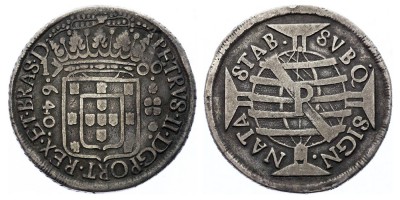At that time, when Peter I ascended the throne, the only coin reigned in Russia, represented by a silver penny, resembling a very small and light watermelon seed. Silver wire was used for its minting.
Gradually, the penny for payments turned into a completely inconvenient coin, and too small, especially when paying for imported goods. Therefore, there is a need to introduce more and more coins, and even different denominations. But there is one important factor - low silver mining in Russia. Naturally, for the production of coins should find a new, more accessible material. The choice was on copper.
And the year 1700 was marked by the fact that for the first time in Russia, copper coins in denominations of 0.5, 0.25 and 0.125 kopecks began to be issued - Denga, Polushka and Polupolushka. The money, produced by Peter 1, was of two kinds. They differed only by the inscription framing the obverse (the front side of the coin). In the first case, round the dengue was written “All Russia autocrat”, and for the second type the inscription “All Russia sovereign” was prepared. Also, on the obverse, the coin had the inscription “denga” and the Slavic dates were indicated. The reverse side of the coin was decorated with a double-headed eagle, and the Grand Duke Peter Alekseevich was written around the coin.
Minted dengue quite a small period of time - 7 years, so it is rare. Today money numismatists buy or sell at very decent prices.
Polushka refers to the smallest coin. Interestingly, it was not so familiar to all the dates, and were applied Slavic letters, meaning the date. The obverse of the Polushka contained the word "Polushka", and the circle of the coin was derived"autocrat of all Russia". In the center of the reverse depicted a two-headed eagle, and on the edge was the inscription " Tsar Peter 1 Alekseevich."
Polupolushka stuck bad, so produced very long.
Showing 1 to 1 of 1 (1 Pages)
 Russian
Russian English
English Deutsch
Deutsch Spanish
Spanish Português
Português


